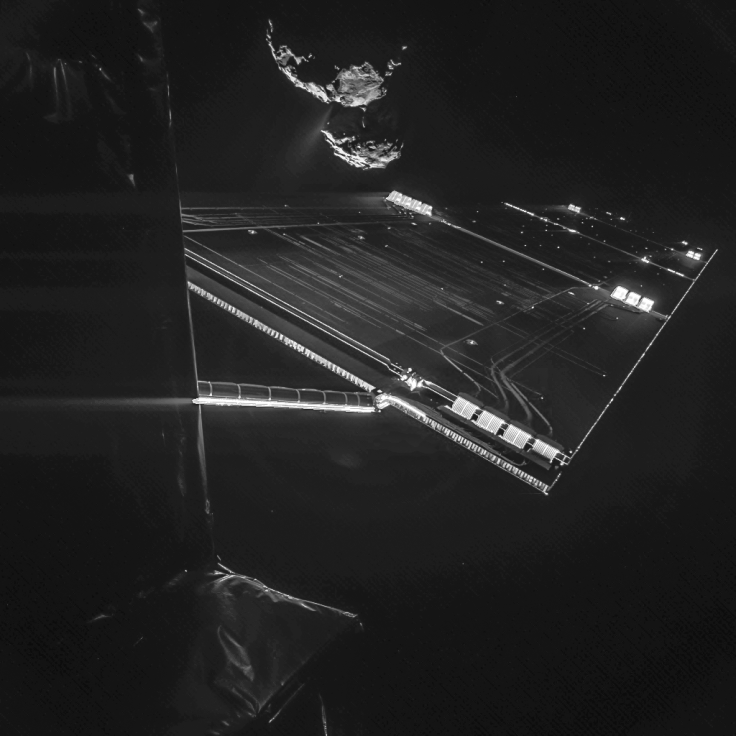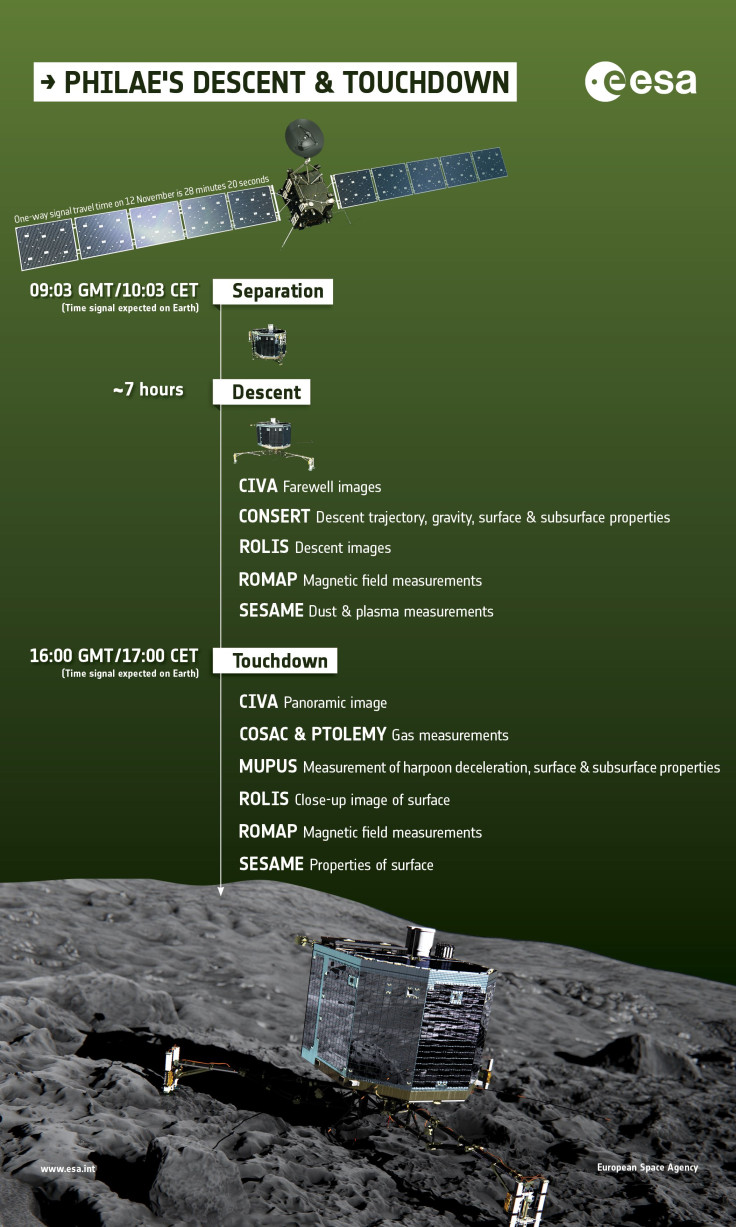Rosetta Comet Selfie: Spacecraft Captures New, Dramatic Images, ESA Confirms Philae Landing Spot

The Rosetta spacecraft has captured a comet selfie, adding to its impressive collection of images as it orbits comet 67P/Churyumov-Gerasimenko. The European Space Agency's Rosetta mission consists of the orbiter, which will ride alongside the comet for the next year, and the Philae lander, which will find a home on the celestial object on Nov. 12.
Rosetta spent a decade getting ready for its historic mission, first launching in 2004 and entering hibernation in 2011 before waking up in January 2014, and is currently in position around the comet. Rosetta is the first spacecraft to orbit a comet and will collect valuable data on these celestial "time capsules," shedding new light on planet formation and the how comets change as they make their way around the sun, notes NASA.
Philae's Comet Infrared and Visible Analyser captured the Rosetta selfie, featuring the spacecraft's solar array and comet 67P/Churyumov-Gerasimenko, with ESA combining a long-exposure image and a short-exposure image. This will be Philae's last image before its Nov. 12 landing date.
ESA confirmed "Site J" as Philae's destination Tuesday. Rosetta has been inching closer to the comet and is currently 10 kilometers (around 6 miles) from its center, giving the team a detailed look at Site J and other landing sites. Ahead of Nov. 12, ESA will have a series of "Go/No-go" decisions, including a Nov. 11 evaluation to determine if Rosetta is on the right trajectory to deploy the lander. Other decisions will confirm the mission's readiness and a final maneuver will take place two hours before the Philae lander is deployed, notes ESA.

"“If any of the decisions result in a No-Go, then we will have to abort and revise the timeline accordingly for another attempt, making sure that Rosetta is in a safe position to try again," said Fred Jansen, ESA’s Rosetta mission manager, in a statement. During its time on the comet, Philae will map its surface, measure the surface atmosphere and probe the comet's interior.
© Copyright IBTimes 2025. All rights reserved.






















